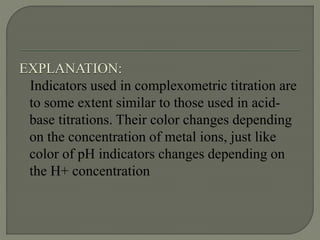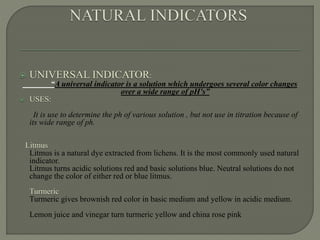This document defines and describes various types of indicators used to determine the acidity, alkalinity or redox state of a solution. It discusses natural indicators like turmeric and litmus, as well as artificial pH indicators like methyl orange and phenolphthalein. It also covers complexometric, adsorption and universal indicators, and provides examples of how different indicators are used to test solutions and determine the endpoint in titration reactions.








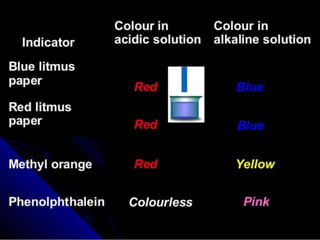
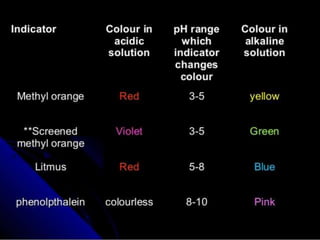





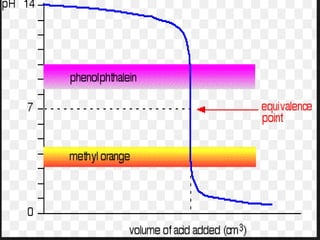
![A complexometric indicator is an ionochromic dye that undergoes a
definite color change in presence of specific metal ions.[1] It forms a weak
complex with the ions present in the solution, which has a significantly
different color from the form existing outside the complex.
NATURE:
Complexometric indicators are water-soluble organic molecules.
EXAMPLES:
Calcein with EDTA for calcium
Fast Sulphon Black with EDTA for copper
Hematoxylin for copper
Xylenol orange for gallium, indium and scandium
USES:
1.In analytical chemistry, complexometric indicators are used in
complexometric
titration to indicate the end point when all the metal ions in the solution are
sequestered by a chelating agent e.g. EDTA.
2.Analysis of metal ions.](https://image.slidesharecdn.com/3a49611a-d134-40a8-bf48-5e4feec1a574-161102143229/85/Indicator-17-320.jpg)
